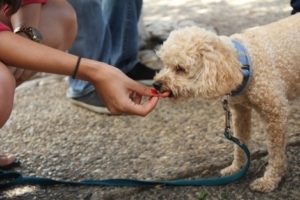by James Scott Bell
@jamesscottbell
In the good old days (you know, before virtual reality, smartphones, TikTok, and even TV and radio) the kids loved to go to penny arcades. So named because almost everything in them cost a penny, they provided brief respite and entertainment from the drudgery of life.
For that one copper coin you could play games—like the claw-grabbing-a-toy game—or get your fortune told.
Most popular were Kinetoscopes and Mutoscopes. The former were short silent films, the latter a series of flipping photographs that told a short story. When you first looked into these machines you saw only one image. When your penny dropped you turned a crank and the “show” started.
 Which is where we get the concept of the “penny drop” in mystery fiction. It is that moment where something happens that triggers or points to the final solution. It’s that last bit that allows the sleuth to connect the dots.
Which is where we get the concept of the “penny drop” in mystery fiction. It is that moment where something happens that triggers or points to the final solution. It’s that last bit that allows the sleuth to connect the dots.
We see it in all classic mysteries, from Holmes to Poirot, Father Brown to Miss Marple, Columbo to Jessica Fletcher.
In my own thrillers, there is usually a mystery at the heart of things. Which means I need that penny drop. It is often the last thing I find. In my personal Scrivener template, I have a penultimate card labeled “Penny Drop” where I scribble notes as I go along. I’ll include memos sent by the Boys in the Basement when I first wake up.
When you nail the penny drop, it’s one of the most satisfying moments of the whole process.
Here is a description of the penny drop from Tom Sawyer’s excellent Fiction Writing Demystified (Note: Sawyer was showrunner for Murder, She Wrote.)
[T]he penny drops for the sleuth at the instant he or she hears, sees, tastes, smells touches or otherwise experiences something which—when combined (usually mentally) with a fact or facts gleaned earlier—tells the detective that till now, everyone in the show has been following false leads. Suddenly, the protagonist has it FIGURED OUT—if not all of it, most of it—and is off and running in the direction of the “Gotcha” scene, leaving the other characters, and the viewers, mystified as to what has been put together, how it has been accomplished, and where he or she plans to go with it.
And here is the #1 most important rule (there, I said it) of all:
[I]t’s important, even if the penny drop is prompted for the protagonist by some lucky accident or coincidence, that most of the other elements of the equation are earned—the result of his or her doing.
Put that down on a Sticky Note and paste it where you can see it, or better yet burn it into your writer’s memory bank.
Now, mystery writers are all over the map when it comes to the who done it part. Some like to write a discovery draft to find out. Others, me included, like to start with the who and the motive, giving me a “shadow story” that helps create the plot.
Whatever your approach, you’re going to need the right penny drop. How to find it?
1. Don’t settle on the first thing that comes to mind. It may be the right solution, but allow others to bubble up and audition. In my Romeo WIP, I seriously considered at least six possible drops. I woke up one morning with a seventh in my mind, and that’s the one I chose.
2. Create a visual of all the main characters and look at them from time to time. I use two things for this: A Scapple (a Scrivener app that lets you create mind maps and connection); and a Scrivener corkboard with character photos (since you’re not publishing these, you can use Google images, which is my preferred method. It’s no secret many writers create their own images with AI).
3. Consider all the senses. As Sawyer points out, not every penny drop is visual. There’s sound (see Chesterton’s Father Brown story “The Queer Feet”), smell, taste, touch. Agatha Christie used every one of these at one time or another.
Of course, not every book has a traditional mystery involved. But I contend page-turning fiction always has mystery elements that keep the reader wondering, Why is this happening? What’s going to happen next? How can the character possibly survive (physically, psychologically, or professionally)?
Instead of solving a murder, you can use the penny drop as a “big reveal” that explains all the happenings to the main character (as in Daphne du Maurier’s Rebecca) or to the readers themselves (Gone Girl).
It has been announced that the U.S. Mint will soon stop making pennies. I’ll miss them. I used to spend mine on Bazooka bubble gum, with its comics featuring Bazooka Joe. Will it now be a nickel for your thoughts? There’s inflation for you.
Here at TKZ, your thoughts are free, so go ahead and share them!






